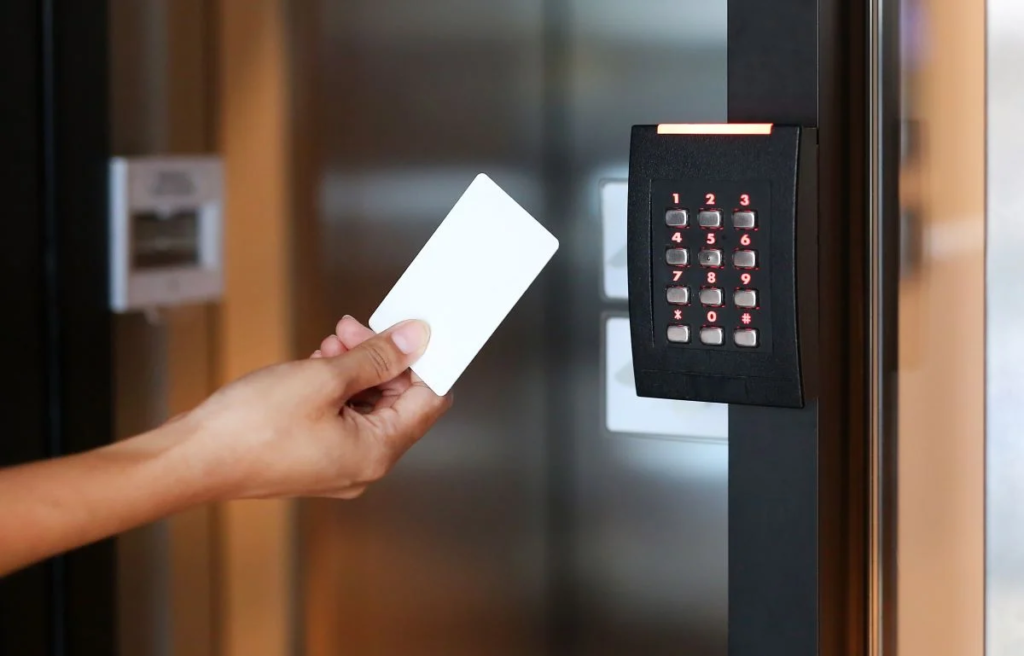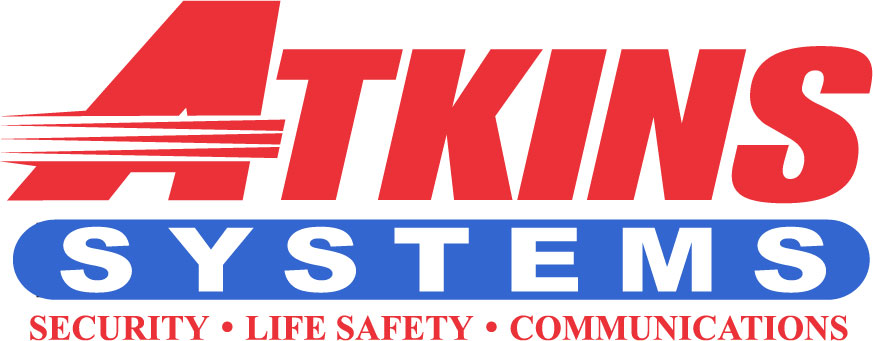
5 Ways to Integrate Access Control & Video Surveillance
Atkins Systems, a pioneer in the security industry with over 20 years of experience, has been at the forefront of integrating access control and video surveillance systems. With a deep understanding of the evolving security landscape, Atkins Systems has consistently delivered cutting-edge solutions that optimize security measures, enhance monitoring capabilities, streamline incident investigations, enable automated event-based responses, and centralize security management. Their expertise in providing holistic security solutions has made them a trusted partner for organizations looking to safeguard their assets and ensure a secure environment.
Key Takeaways
- Enhance security measures by synchronizing access control and video surveillance data.
- Utilize advanced monitoring capabilities for real-time alerts and detailed post-incident investigations.
- Automate event-based responses for immediate alerts, remote access control, and integration with emergency services.
- Centralize security management to improve operational efficiency and overall security posture.
- Enable real-time alerts and notifications with customizable options and seamless integration with access control systems.
Synchronized Access and Video Data
By synchronizing access control data with video surveillance recordings, organizations can enhance security measures and streamline incident investigations. This integration allows for a more inclusive overview of security events by providing a synchronized timeline of access control activities and corresponding video footage.
Access control data typically includes information such as entry and exit times, access points used, and the identity of individuals accessing specific areas. By aligning this data with video recordings, security teams can quickly verify the identity of individuals attempting to access restricted areas, detect unauthorized entry attempts, and investigate incidents in real-time.
Furthermore, synchronized access control and video data enable organizations to proactively monitor security events and respond promptly to potential threats. For example, if an access control system detects a suspicious entry attempt, security personnel can immediately review the synchronized video footage to assess the situation and take appropriate action.
In addition to enhancing security measures, the synchronization of access control data with video surveillance recordings can also improve the efficiency of incident investigations. By providing a visual record of security events, this integration simplifies the process of reconstructing incidents, identifying potential perpetrators, and gathering evidence for further analysis or legal proceedings. Overall, the synchronization of access control and video data offers organizations a powerful tool for enhancing security protocols and ensuring a swift response to security threats.
Enhanced Monitoring Capabilities
The synchronization of access control data with video surveillance recordings not only enhances security measures but also provides organizations with advanced monitoring capabilities. By integrating access control systems with video surveillance technology, organizations can effectively monitor and manage their premises in real-time, leading to improved overall security.
One key aspect of enhanced monitoring capabilities is the ability to receive real-time alerts and notifications. When access control systems detect unauthorized entry attempts or security breaches, the integrated video surveillance system can immediately provide live video feeds to security personnel. This allows for quick assessment of the situation and enables timely response to potential threats.
Furthermore, the integration of access control and video surveillance enables organizations to conduct detailed investigations post-incident. Security teams can easily retrieve synchronized access control data and corresponding video footage to reconstruct events and analyze security breaches. This not only helps in identifying culprits but also in implementing preventive measures to avoid future security incidents.
Moreover, advanced monitoring capabilities allow for proactive security measures such as remote monitoring of multiple locations from a centralized control room. Security personnel can efficiently manage access control permissions, monitor live video feeds, and respond to security incidents promptly.
Automated Event-based Responses
Implementing automated event-based responses in access control and video surveillance systems revolutionizes the way organizations handle security incidents. By leveraging technology to detect specific events and trigger predefined responses, organizations can enhance their security measures and respond promptly to potential threats. Automated event-based responses offer a proactive approach to security, enabling real-time actions based on predefined criteria, ultimately improving overall safety and operational efficiency.
- Immediate Alerts: Automated event-based responses can instantly alert security personnel or designated individuals when a predefined event occurs, ensuring swift action is taken.
- Remote Access Control: With automated responses, organizations can remotely control access to certain areas or lock down facilities in response to security events without delay.
- Integration with Emergency Services: These systems can be integrated with emergency services, automatically notifying them in case of critical events for a faster response.
- Increased Accuracy: Automation reduces human error in responding to security incidents, ensuring a more accurate and reliable security process.
- Historical Data Analysis: Organizations can analyze historical data from automated responses to identify patterns, improve security protocols, and prevent future incidents.
Automated event-based responses not only streamline security operations but also provide a proactive approach to handling security incidents effectively. By combining access control and video surveillance with automated responses, organizations can significantly enhance their security posture and better protect their assets.
Centralized Security Management
Centralizing security management enhances operational efficiency and coordination within organizations by consolidating monitoring and control functions into a unified system. By centralizing security management, organizations can streamline their security operations, reduce complexity, and improve overall security posture.
Centralized security management allows for the integration of access control and video surveillance systems, creating a more thorough security infrastructure. This integration enables security teams to have a holistic view of the organization’s security landscape, allowing them to respond more effectively to security incidents and threats.
Moreover, a centralized security management system provides a single point of control, making it easier for security personnel to monitor and manage access control and video surveillance activities. This centralized approach enhances situational awareness and enables quicker response times in case of security breaches.
Additionally, centralizing security management facilitates better data management and analysis. By consolidating data from access control and video surveillance systems, organizations can gain valuable insights into security trends, patterns, and vulnerabilities. This data-driven approach helps in making informed decisions to enhance security measures and mitigate risks effectively.
Real-time Alerts and Notifications
Integrating access control and video surveillance systems in a centralized security management framework enables real-time alerts and notifications for proactive security monitoring and response. This integration allows security personnel to receive immediate notifications about any suspicious activities, breaches, or unauthorized access attempts, empowering them to respond swiftly and effectively. Real-time alerts and notifications play a vital role in enhancing situational awareness and reducing response times in critical security incidents.
- Instant Alerts: Receive immediate notifications on mobile devices or computer screens when security events occur.
- Customizable Notifications: Tailor alerts based on specific criteria such as time of day, location, or type of security breach.
- Integration with Access Control: Link access control events with video footage to provide a detailed view of security events.
- Automated Notifications: Set up automated alerts for routine events or triggers to streamline monitoring processes.
- Two-way Communication: Enable communication through alerts to interact with individuals on-site or remotely in real-time.
Frequently Asked Questions
How Can Access Control and Video Surveillance Systems Be Integrated to Improve Overall Security Measures?
Integrating access control with video surveillance enhances security by providing a holistic approach to monitoring and controlling access within a facility. This integration allows for real-time monitoring, efficient incident response, and seamless access management.
What Are Some Common Challenges Faced When Integrating Access Control and Video Surveillance Systems?
Integrating access control and video surveillance systems can present challenges such as interoperability issues, system complexity, and ensuring data synchronization. Addressing these hurdles through proper planning, testing, and vendor support is vital for successful integration.
What Are the Key Benefits of Having Synchronized Access and Video Data in a Security System?
Having synchronized access and video data in a security system offers enhanced situational awareness, seamless incident investigation, streamlined response times, and thorough monitoring capabilities. This integration enables a more robust and efficient security infrastructure.
How Can Automated Event-Based Responses Enhance the Effectiveness of Access Control and Video Surveillance Systems?
Automated event-based responses can greatly enhance the effectiveness of access control and video surveillance systems by enabling real-time reactions to security incidents, streamlining incident management, improving response times, and ensuring a proactive approach to security threats.
What Factors Should Be Considered When Centralizing Security Management for Access Control and Video Surveillance Systems?
When centralizing security management for access control and video surveillance systems, factors such as scalability, integration capabilities, data security, compliance requirements, and user training must be carefully considered to guarantee an efficient and cohesive security infrastructure.
Conclusion
In conclusion, the integration of access control and video surveillance systems offers a multitude of advantages for enhancing security measures. From synchronized data to automated event-based responses, this merging of technologies provides a comprehensive security solution for businesses looking to safeguard their assets and premises effectively. To take the first step towards implementing a robust security system tailored to your specific needs, contact Atkins Systems for a free consultation. As a trusted leader in commercial and residential security systems in metro Atlanta since 1983, Atkins Systems is dedicated to providing top-notch security solutions for all your security needs.
